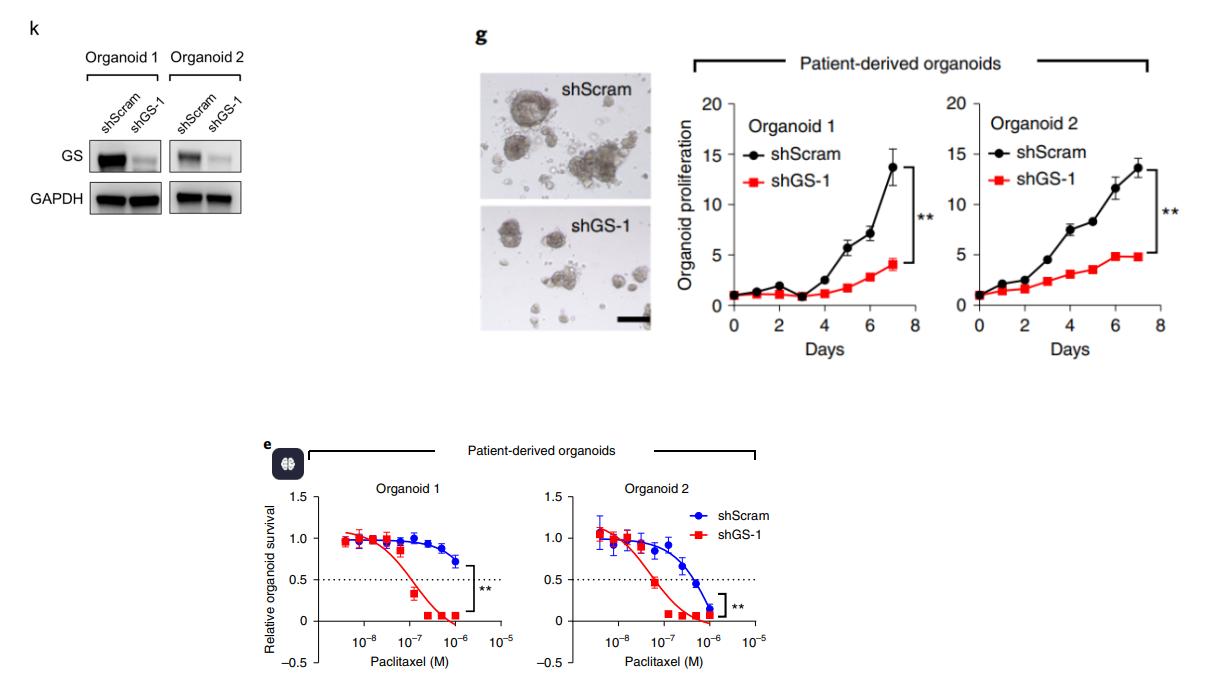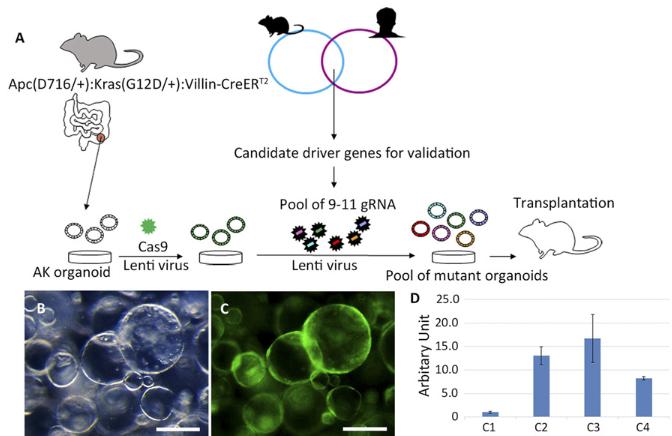- You are here: Home
- Applications
- 3D Spheroid & Organoid Culture
- Genetic Engineering in Organoids
Applications
-
Cell Services
- Cell Line Authentication
- Cell Surface Marker Validation Service
-
Cell Line Testing and Assays
- Toxicology Assay
- Drug-Resistant Cell Models
- Cell Viability Assays
- Cell Proliferation Assays
- Cell Migration Assays
- Soft Agar Colony Formation Assay Service
- SRB Assay
- Cell Apoptosis Assays
- Cell Cycle Assays
- Cell Angiogenesis Assays
- DNA/RNA Extraction
- Custom Cell & Tissue Lysate Service
- Cellular Phosphorylation Assays
- Stability Testing
- Sterility Testing
- Endotoxin Detection and Removal
- Phagocytosis Assays
- Cell-Based Screening and Profiling Services
- 3D-Based Services
- Custom Cell Services
- Cell-based LNP Evaluation
-
Stem Cell Research
- iPSC Generation
- iPSC Characterization
-
iPSC Differentiation
- Neural Stem Cells Differentiation Service from iPSC
- Astrocyte Differentiation Service from iPSC
- Retinal Pigment Epithelium (RPE) Differentiation Service from iPSC
- Cardiomyocyte Differentiation Service from iPSC
- T Cell, NK Cell Differentiation Service from iPSC
- Hepatocyte Differentiation Service from iPSC
- Beta Cell Differentiation Service from iPSC
- Brain Organoid Differentiation Service from iPSC
- Cardiac Organoid Differentiation Service from iPSC
- Kidney Organoid Differentiation Service from iPSC
- GABAnergic Neuron Differentiation Service from iPSC
- Undifferentiated iPSC Detection
- iPSC Gene Editing
- iPSC Expanding Service
- MSC Services
- Stem Cell Assay Development and Screening
- Cell Immortalization
-
ISH/FISH Services
- In Situ Hybridization (ISH) & RNAscope Service
- Fluorescent In Situ Hybridization
- FISH Probe Design, Synthesis and Testing Service
-
FISH Applications
- Multicolor FISH (M-FISH) Analysis
- Chromosome Analysis of ES and iPS Cells
- RNA FISH in Plant Service
- Mouse Model and PDX Analysis (FISH)
- Cell Transplantation Analysis (FISH)
- In Situ Detection of CAR-T Cells & Oncolytic Viruses
- CAR-T/CAR-NK Target Assessment Service (ISH)
- ImmunoFISH Analysis (FISH+IHC)
- Splice Variant Analysis (FISH)
- Telomere Length Analysis (Q-FISH)
- Telomere Length Analysis (qPCR assay)
- FISH Analysis of Microorganisms
- Neoplasms FISH Analysis
- CARD-FISH for Environmental Microorganisms (FISH)
- FISH Quality Control Services
- QuantiGene Plex Assay
- Circulating Tumor Cell (CTC) FISH
- mtRNA Analysis (FISH)
- In Situ Detection of Chemokines/Cytokines
- In Situ Detection of Virus
- Transgene Mapping (FISH)
- Transgene Mapping (Locus Amplification & Sequencing)
- Stable Cell Line Genetic Stability Testing
- Genetic Stability Testing (Locus Amplification & Sequencing + ddPCR)
- Clonality Analysis Service (FISH)
- Karyotyping (G-banded) Service
- Animal Chromosome Analysis (G-banded) Service
- I-FISH Service
- AAV Biodistribution Analysis (RNA ISH)
- Molecular Karyotyping (aCGH)
- Droplet Digital PCR (ddPCR) Service
- Digital ISH Image Quantification and Statistical Analysis
- SCE (Sister Chromatid Exchange) Analysis
- Biosample Services
- Histology Services
- Exosome Research Services
- In Vitro DMPK Services
-
In Vivo DMPK Services
- Pharmacokinetic and Toxicokinetic
- PK/PD Biomarker Analysis
- Bioavailability and Bioequivalence
- Bioanalytical Package
- Metabolite Profiling and Identification
- In Vivo Toxicity Study
- Mass Balance, Excretion and Expired Air Collection
- Administration Routes and Biofluid Sampling
- Quantitative Tissue Distribution
- Target Tissue Exposure
- In Vivo Blood-Brain-Barrier Assay
- Drug Toxicity Services
Genetic Engineering in Organoids
Organoids are three-dimensional, miniaturized, and simplified versions of organs that replicate the architecture and functionality of their in vivo counterparts. This makes them powerful tools for biological research, disease modeling, and regenerative medicine. Genetic engineering within organoids has significantly expanded their utility by enabling precise manipulation of genes and cellular behavior. As techniques become more refined, the potential of genetically engineered organoids in translational research and personalized medicine continues to grow, promising breakthroughs in the understanding and treatment of complex diseases. These organoids further enhance this innovation by introducing specific genetic modifications, which allows scientists to:
- Functional Studies: Analyze how specific genes contribute to organ development, function, and disease.
- Drug Testing and Development: Evaluate the efficacy and safety of drugs in organ-like systems that include genetic variations found in humans.
- Personalized Medicine: Tailor treatments to patients by testing drugs on organoids developed from their stem cells and modified to simulate genetic conditions.
 Figure 1. Process for establishing genetic engineering organoids.
Figure 1. Process for establishing genetic engineering organoids.
Creative Bioarray offers a comprehensive suite of organoid genetic engineering services tailored to meet the needs of researchers and biomedical companies. These services enable groundbreaking advancements in the development and application of organoid models, leveraging cutting-edge technologies and innovative methodologies. Our services include:
Gene-Overexpression in Organoids
- Organoid model: cervical cancer organoids
- Method: Lentivirus-mediated gene overexpression
 Figure 2. Exogenous genes were overexpressed in HPV16+ cervical cancer organoids. [1]
Figure 2. Exogenous genes were overexpressed in HPV16+ cervical cancer organoids. [1]
Gene-Knockdown in Organoids
- Organoid model: non-small cell lung cancer organoids
- Method: Lentivirus-mediated shRNA interference
 Figure 3. Glutamine synthetase (GS) was knocked down by lentivirus-mediated shRNA in non-small cell lung cancer organoids. [2]
Figure 3. Glutamine synthetase (GS) was knocked down by lentivirus-mediated shRNA in non-small cell lung cancer organoids. [2]
Gene-Knockout in Organoids
- Organoid model: mouse intestinal tumor organoids
- Method: Lentivirus CRISPR-Cas9–mediated gene knockout
 Figure 4. CRISPR-Cas9–mediated gene knockout in mouse intestinal tumor organoids. [3]
Figure 4. CRISPR-Cas9–mediated gene knockout in mouse intestinal tumor organoids. [3]
Service Highlights
- Abundant organoid models: Our organoid library covers different disease types and provides a wide range of models for genetic modification.
- Mature construction strategies: The establishment and identification of organoid lines can be completed within 4 to 8 weeks.
- Providing a variety of downstream research services: The constructed organoid model can be utilized for proliferation assay, drug sensitivity tests, apoptosis analysis, cell cycle analysis, in vivo animal experiments, tumor immunity assessments, and other functional tests and phenotype studies.
- Supporting multi-omics approaches: The genetically modified organoid model can leverage various omics tools, including genome, transcriptome, proteome, and epigenetics, to facilitate mechanism research.
References
- Xiong, Chengjie et al. "Identification of novel HLA-A*11:01-restricted HPV16 E6/E7 epitopes and T-cell receptors for HPV-related cancer immunotherapy." Journal for immunotherapy of cancer vol. 10,9 (2022): e004790. doi:10.1136/jitc-2022-004790
- Zhao, Jiang-Sha et al. "Glutamine synthetase licenses APC/C-mediated mitotic progression to drive cell growth." Nature metabolism vol. 4,2 (2022): 239-253. doi:10.1038/s42255-021-00524-2
- Takeda, Haruna et al. "CRISPR-Cas9-mediated gene knockout in intestinal tumor organoids provides functional validation for colorectal cancer driver genes." Proceedings of the National Academy of Sciences of the United States of America vol. 116,31 (2019): 15635-15644. doi:10.1073/pnas.1904714116
Explore Other Options
For research use only. Not for any other purpose.

